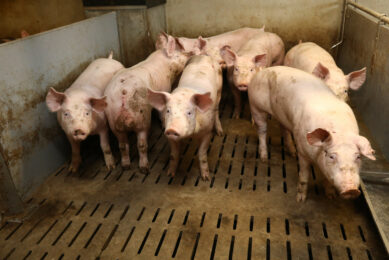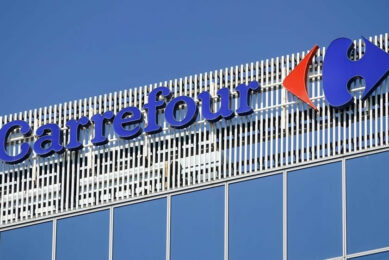Meal frequency and its effect on feed efficiency in pigs

Less frequent daily meal intake improves the conversion of feed into weight gain, work at the French research institute INRA showed.
Ingested dietary nutrients and feed energy are partitioned among tissues to sustain body growth. Based on the respective costs of the various metabolic pathways allowing use and storage of feed energy into cells, it may be theorised that daily meal frequency could affect growth, body composition or feed efficiency.
Experimental set-up
This study by INRA aimed to determine the effects of daily meal frequency on nutrient partitioning, tissue metabolism and composition, and performance. Young growing pigs (30 kg BW) were offered a same amount of feed either in 2 (M2, n = 15) or 12 (M12, n = 16) meals per day during a 3-wk interventional period. Animals fed twice a day had an accelerated weight gain (+6.4%, P < 0.05) and exhibited a greater G:F (+4%, P = 0.03) than animals fed 12 meals per day during this period.
Effect on glucose
It was shown that basal plasma concentrations of glucose, lactate, triglyceride, urea, and leptin were lower (P < 0.001) in M2 pigs than in M12 pigs. Meal frequency also changed (P < 0.001) the time-course profiles of plasma concentrations of glucose, insulin, and lactate in response to meal ingestion. A greater rise and a sharper fall in plasma glucose and insulin levels were observed in M2 pigs compared with M12 pigs. In both groups, similarities were observed in the postprandial time courses of plasma concentrations of insulin and of α-amino nitrogen (used as a measure of total AA).
Metabolic responses not influenced
Despite these metabolic responses, tissue lipids, glycogen content, and enzyme activities participating in energy metabolism in muscle and liver were similar (P > 0.10) in both groups at the end of the trial. Percentage of perirenal fat in the body and depth of dorsal subcutaneous fat tissue were not affected by meal frequency, but kidney weight was lower (-18%, P < 0.001) in M2 pigsthan in M12 pigs. Altogether, the less frequent daily meal intake improves the conversion of feed into weight gain, without marked modifications of tissue composition in young pigs.
The full article has been published in the May edition of the Journal of Animal Science.











